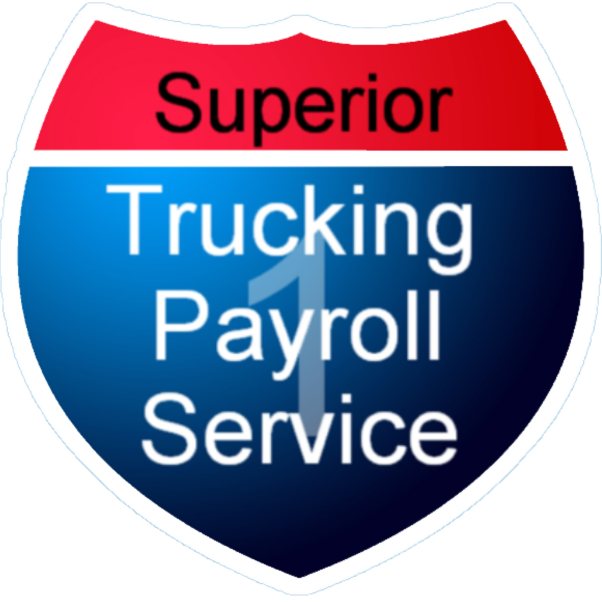If you’ve ever struggled to figure out how to fairly pay your truck drivers for the miles they drive, you’re not alone. With so many ways to calculate miles—odometer, loaded, PC Miler, and more—it can feel overwhelming to choose the right one. The wrong decision could lead to frustrated drivers, overpaying for unnecessary miles, or even legal issues if discrepancies aren’t handled correctly.
As a trucking company owner, you’re already juggling a lot—keeping trucks running, managing routes, and ensuring your team is satisfied. The last thing you need is confusion or arguments over payroll. Simplifying this process is key to keeping your drivers happy while also staying compliant with wage laws.
In this article, we’ll walk you through the different methods for calculating miles so you can find the one that’s right for your business. Whether you choose odometer, loaded, or PC Miler miles, you’ll come away with a clear plan for paying your drivers fairly—and with fewer headaches along the way.
Understanding the Methods for Calculating Miles for Truck Driver Payroll
Each method for calculating miles has its own benefits and drawbacks.
Let’s take a closer look at the most common ones.
What Are Odometer Miles (Hub Miles)?
Odometer miles are the most straightforward way to calculate miles. You simply use the odometer reading on the truck. You subtract the miles from when the driver left from when they return. This is often called “hub miles.”
-
Pros:
Odometer miles are easy to calculate, and the driver gets paid for every mile they drive.
-
Cons:
Drivers can get paid for going out of route or taking the truck home without permission, which can cost you extra.
What Are Loaded Miles?
Loaded miles only pay the driver for the miles driven while the truck is loaded with freight. If the truck is empty, the driver either gets paid less or not at all.
-
Pros:
Some trucking companies like loaded miles because they believe drivers should get paid when the truck is earning money.
-
Cons:
Drivers have no control over deadhead or empty miles. If too many unpaid miles are driven, you might run into minimum wage issues.


PC Miler Miles: Practical vs. Short Routes Explained
PC Miler is a routing software that calculates miles based on different types of routes. There are two main options: practical miles and short miles.
-
Practical miles:
These are the most reasonable routes that a truck can legally take.
-
Short miles:
These are the shortest legal routes, usually 4-8% shorter than practical miles, but they can vary greatly depending on the route. (not recommended, and can get you in trouble)
-
Pros:
PC Miler can handle routes with multiple stops, and it’s easy to calculate mileage for round trips.
-
Cons:
It doesn’t account for things like construction, accidents, or times when the driver has to turn around or reroute.
Why Google Maps Isn’t Suitable for Trucking Routes
Google Maps is another option, but it’s not recommended for truck routes. Google doesn’t consider truck restrictions, like weight limits or low bridges, making it unreliable for professional truckers.
Other Less Common Methods for Calculating Miles
Some companies may try to calculate miles as the crow flies (air miles), but this is not realistic since trucks can’t travel in a straight line from one point to another.
Now that you have a clear understanding of the different ways to calculate miles, it’s time to decide which method works best for your trucking business.
Choosing the Best Method to Calculate Miles for Payroll
Each method for calculating miles has its pros and cons, but the best choice depends on what works for your business, your drivers, and your overall goals.
-
Odometer miles
The most straightforward and easiest to understand, but they can lead to paying drivers for extra miles if they take the truck home or go off route.
-
Loaded miles
Align driver pay with when the truck is making money, but they leave gaps when the truck is empty, and drivers can’t control that.
-
PC Miler
Is a popular option because it uses practical routes, but it doesn’t account for rerouting or unexpected delays.
Our Recommendation for Calculating Miles
We recommend using odometer miles because they are easy to calculate, and drivers know exactly what they are getting paid for. However, it’s important to track these miles carefully. You don’t want to pay extra for miles driven off-route or for personal use. You can monitor odometer miles against routing software like PC Miler to keep things on track.
If you choose to use another method, make sure you clearly explain it to your drivers before they start working for you. Add a section in your employee handbook that they sign off on to avoid any confusion.
Once you’ve chosen the method that fits your needs, it’s important to implement it correctly and ensure everyone is on the same page—starting with some best practices for your payroll system.
Best Practices for a Miles-Based Payroll System
After selecting the best mileage calculation method, it’s crucial to follow these best practices to ensure your payroll system runs smoothly and remains transparent for both you and your drivers.
How to Communicate Your Mileage Method with Drivers
Whichever method you choose, it’s important to communicate it clearly to your drivers. They should understand how you calculate their pay before they start working. This will prevent disputes later.
Tips for Monitoring and Adjusting Miles
If you use odometer miles, keep an eye on how the actual miles driven compare to what your routing software suggests. This will help you catch any discrepancies, like if a driver is going out of route. It’s a good idea to review these records regularly.
Importance of Transparency in Mileage Calculation
Always be transparent about how miles are calculated. Include the details in your employee handbook, and make sure the driver signs it. This will help protect you from legal issues if the driver feels they weren’t paid correctly.
By following these best practices, you’ll create a more efficient and transparent payroll system that benefits both your business and your drivers. Now, let’s wrap up with some final thoughts on how to make the best choice for calculating miles and keeping your payroll process on track.
Final Thoughts on Calculating Miles for Truck Driver Payroll
Deciding how to calculate miles for truck driver payroll is crucial for keeping both your drivers and your business running smoothly. Whether you opt for odometer miles, loaded miles, or PC Miler, the key is to ensure your drivers are paid fairly and your process is transparent. The last thing you want is payroll disputes or compliance issues slowing you down.
Once you’ve chosen a mileage method, you may also want to explore how a payroll service can simplify the process further. Are you handling everything in-house, or are you considering the benefits of working with a payroll service? Managing payroll can be a time-consuming task, especially with the complexity of the trucking industry. Many companies find that outsourcing payroll can save them time and reduce errors.
If you’re wondering whether payroll outsourcing is right for your business, check out our article on Payroll Outsourcing Challenges to learn more about the pros and cons and how it might help streamline your operations.
Written by Melisa Bush
With over 15 years of experience in the trucking industry, Melisa is well-versed in the complexities of trucking payroll and adept at navigating special circumstances. Before joining Superior Trucking Payroll Service, Melisa worked at a trucking company, where she managed driver miles and expenses for a fleet of 50 trucks. This hands-on experience gives her unique insight into the challenges our clients face when preparing their payroll data.
Melisa’s top priority is customer service. She strives to treat each client as an individual with genuine needs, rather than just another number in the system. Her goal is to alleviate the burdens of our clients and make their daily operations smoother.

